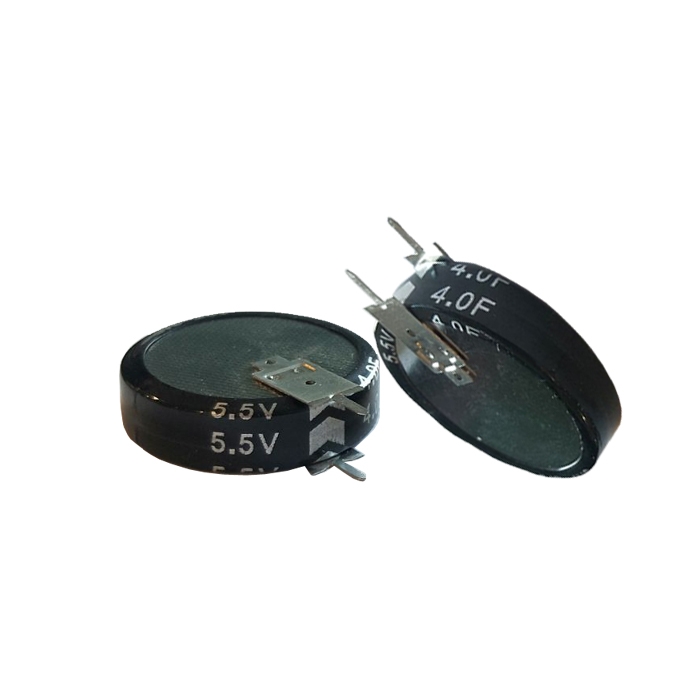Consulting phone:
135-3037-2041
(Mr.Wang)
Farad capacitors are also supercapacitors .
Farad capacitors are classified as electric double layer capacitors , which are the largest capacity electric double layer capacitors in the world that have been put into mass production. The basic principle is the same as other types of electric double layer capacitors, using activated carbon porous electrodes and electrolytes. The composed electric double layer structure achieves a large capacity.
Capacity: The capacity of the capacitor, that is, the capacity of the stored charge. The basic unit of capacity is farad (F), but on the main board we commonly use units such as microfarads (μF) and picofarads (pF) (the conversion relationship is 1 farad = 1000000 microfarads, 1 microfarad = 1000 nanofarads = 1,000,000 picofarads). The capacity is directly marked, such as GSC4700μF, generally speaking, the bigger the better.
Withstand voltage value: It refers to the effective value of the maximum DC voltage or the maximum AC voltage that the capacitor can work reliably for a long time in the range of extra temperature. Different capacitors have different withstand voltage values, mostly between 6.3V and 16V.
Temperature resistance value: The temperature resistance value indicates the maximum operating temperature that the capacitor can accept. The general capacitance temperature resistance value is 85 ℃ or 105 ℃, while the capacitance temperature resistance value around the CPU power supply circuit is mostly 105 ℃.
Other indicators: Some capacitors also have a golden stripline printed with a large hollow "I" letter, which indicates that the capacitor is a LOWESR low-loss capacitor. Some capacitors will also be marked with the ESR (equivalent resistance) value. The lower the ESR, the smaller the loss and the greater the output current. The quality of capacitors with low ESR is good.

Features
(1) The charging speed is fast, charging for 10 seconds to 10 minutes can reach more than 95% of its extra capacity;
(2) The cycle life is long, and the number of deep charge and discharge cycles can reach 10,000 to 500,000 times, and there is no "memory effect";
(3) High current discharge ability, high energy conversion efficiency, small process loss, high current energy cycle efficiency ≥90%;
(4) High power density, up to 300W/KG~5000W/KG, equivalent to 5~10 times that of batteries;
(5) The raw material composition, production, application, storage and dismantling process of the product are free of pollution, which is an ideal green power source;
(6) The charging and discharging circuit is simple, no charging circuit like a rechargeable battery is needed, the safety factor is high, and the long-term use is maintenance-free;
(7) Good ultra-low temperature characteristics, wide temperature range -40℃~+70℃;
(8) The detection is convenient, and the remaining power can be directly read out;
(9) The capacity scale is generally 0.1F--1000F.
How to distinguish the positive and negative poles of Farad capacitors
Button type: The positive pole of the V type and H type is on the small side (upper cover), and the large side is the negative pole; the C type pins are "long positive and short negative".
Lead type: lead "long positive short negative".
Bullhorn type (cover type): The terminal surface with stripes is the negative pole, and the terminal surface without stripes is the positive pole.
Bolt type and pole type: Generally, the shell is used as the positive electrode, and the upper cover is used as the negative electrode.
Then, the general casing products have a polarity mark on the casing, and the terminal closest to the polarity mark is the marked polarity.
Capacitor positive and negative judgment
First of all, look at whether the capacitor is in the process of charging or discharging. If the capacitor is in the process of charging, the plate connected to the positive pole of the power supply is positively charged, and the current appears to flow to this plate at this moment; if the capacitor is in the process of discharging, the capacitor is equivalent to the power supply. , the plate where the current leaves is equivalent to the positive pole of the power supply, that is, this is the positively charged plate.
Secondly, for the problem of capacitors, we generally consider the dynamic analysis in the DC circuit, that is, the state of the capacitor will be changed to change the quantity in the circuit. At this time, the common method is:
1. Determine whether the capacitor is connected to the power supply. If it is connected, U will remain unchanged, and if it is disconnected, Q will remain unchanged.
2. Analyzed by three formulas:
C=Q/U
C=eS/4∏Kd
E=U/d
3. In addition, when the capacitor Q remains unchanged, we can convert the formula to get
E=4∏kQ/es